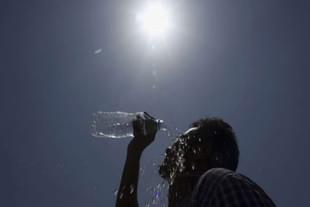News Brief
'Reduced Green Cover, Lost Water Bodies': Why The Trouble For Bengaluru Is Far From Over
Nayan Dwivedi
Apr 11, 2024, 03:26 PM | Updated 03:26 PM IST
Save & read from anywhere!
Bookmark stories for easy access on any device or the Swarajya app.


According to the Centre for Ecological Sciences (CES) at the Indian Institute of Science, Bengaluru city has already lost 66 per cent of its green cover, 74 per cent of its water bodies, and has witnessed a staggering 584 per cent growth in built-up areas.
As reported by Economic Times, by 2038, forests are expected to dwindle to a mere 0.65 per cent, while paved surfaces are set to cover over 98 per cent of the city.
The urban heat island effect is becoming increasingly pronounced, with land surface temperatures soaring from 33.04 degrees Celsius in 1992 to 41.4 degrees Celsius in 2017.
Professor T V Ramachandra from CES warns that the decline in green spaces exacerbates the urban heat island effect, leading to heat stress and related health issues.
Echoing his sentiments, Professor Harini Nagendra from Azim Premji University emphasizes the importance of Bengaluru's historical approach to urban planning.
"The open wells and lakes that were part of these gundathopes provided water to people, especially during summer because Bengaluru has always been this unusual semi-arid city, which doesn't get a lot of rainfalls that it needed to harvest every drop of water that it gets," added Nagendra.
She underscores the need to revive these practices to mitigate the city's environmental challenges.
Recent studies have also demonstrated the critical role of trees in reducing air temperatures and combating air pollution.
However, Bengaluru falls short of the recommended 33 per cent green cover, with only 17 trees per 100 persons.
Meanwhile, the recent water crisis further compounds Bengaluru's woes, with erratic monsoon patterns and depleted groundwater reserves exacerbating shortages.
Also Read: BJP Fields NISHAD Party MLA On Lotus Symbol From UP's Bhadohi
Nayan Dwivedi is Staff Writer at Swarajya.





